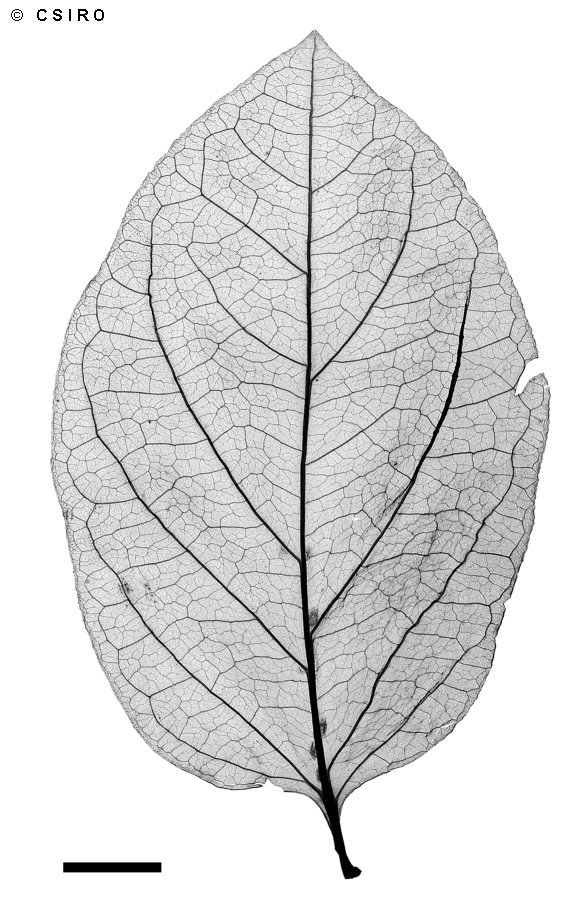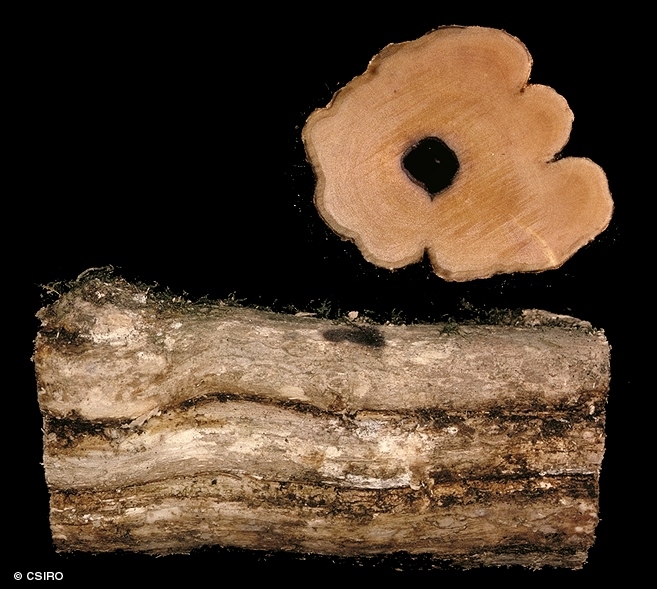Australian Tropical Rainforest Plants - Online edition
Glossocarya hemiderma (F.Muell. ex Benth.) F.M.Bailey




Bailey, F.M. (1913) Comprehensive Catalogue of Queensland Plants : 386.
Usually grows into a large tree-top vine but also flowers and fruits as a shrub 1-4 m tall. Vine stem diameters to 9 cm recorded. Stem very hard and woody, living bark layer quite thin, 2 mm thick on a stem diameter of 90 mm. Vascular rays visible to the naked eye but not very obvious.
Twigs and petioles sparsely pubescent, both the upper and lower surfaces of the leaf blade +/- glabrous or very sparsely pubescent. Leaf blades about 4-12.5 x 2-6 cm, without glands, petioles about 2-11 mm long, grooved or channelled on the upper surface. Margins often with 1-5 large teeth on each side of leaves produced on epicormic shoots but margins usually entire on leaves produced on mature shoots. Lateral veins about 4-6 on each side of the midrib. Leaf bearing twigs often square in transverse section, finely grooved or ridged with lateral branches often pointing backwards and branch stubs often persistent in pairs, each stub about 1.3-2.3 cm long.
Calyx about 3-4.5 x 2-3 mm, hairy and glandular on the outer surface but glabrous on the inner surface, teeth rounded or bluntly pointed, about 0.5 mm long. Corolla tube about 5-7 x 1.5-3 mm, hairy and glandular on the outer and inner surfaces. Stamens exserted, filaments about 6-9 mm long, anthers about 0.5-1 mm long. Ovary glandular and hairy on the upper half. Style exserted, about 9-13 mm long.
Fruit about 6-10 x 3-3.5 mm, glandular and hairy on the upper half. Calyx, persistent at the base, about 3-5 mm long.
Features not available.
Occurs in CYP, NEQ, CEQ and southwards to south eastern Queensland. Altitudinal range from near sea level to 700 m. Grows in well developed lowland and upland rain forest and monsoon forest. Also occurs in New Guinea.





